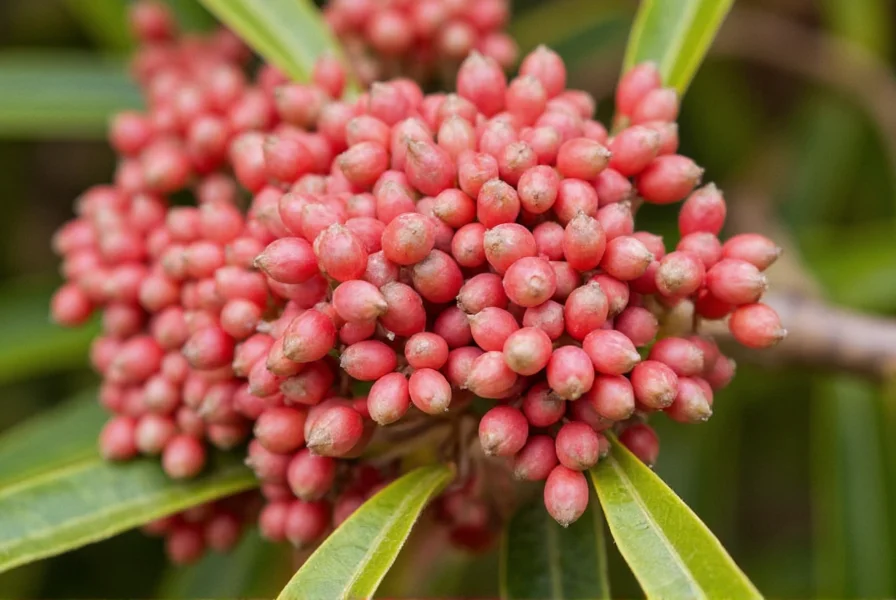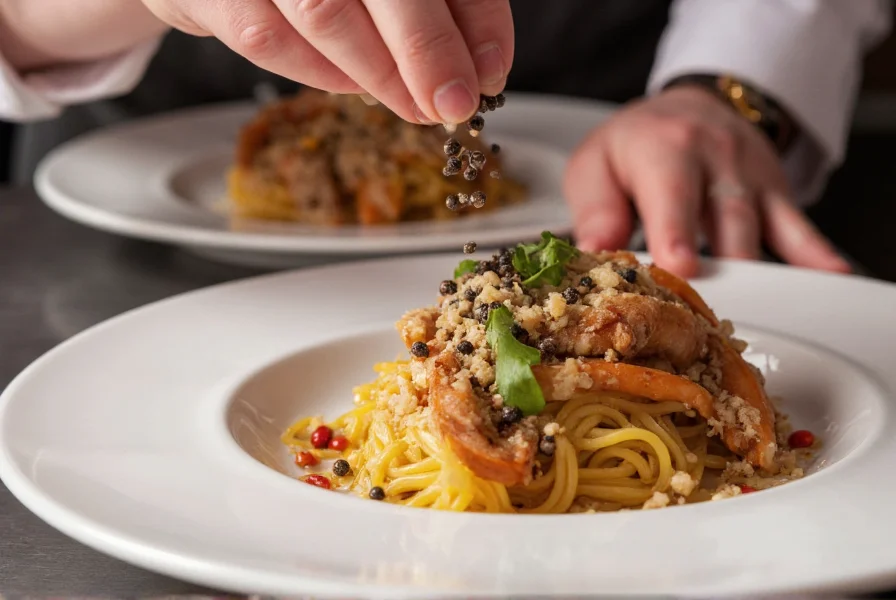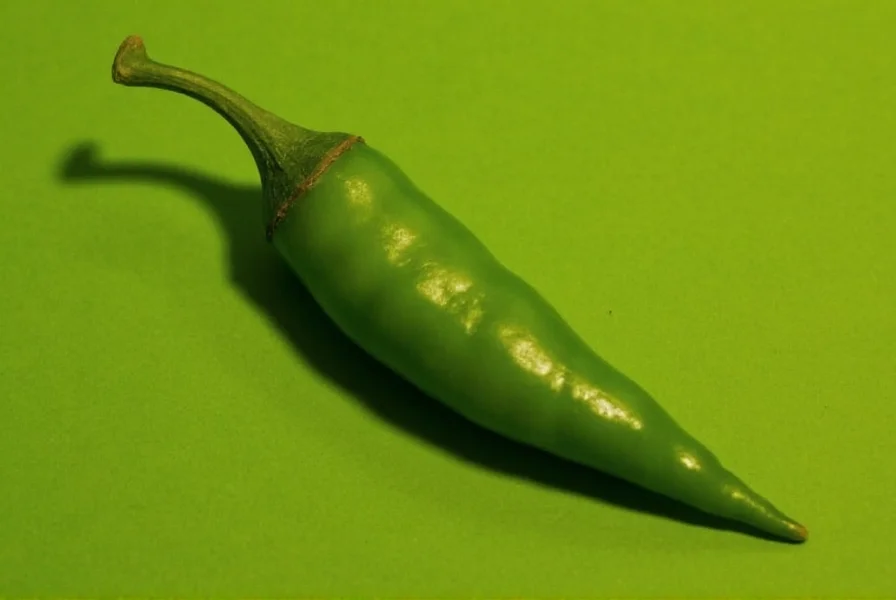When exploring what is Peruvian pepper, it's crucial to clarify the botanical confusion surrounding this popular spice. Many consumers mistakenly believe Peruvian pepper and pink peppercorns are identical, but they originate from different species within the Schinus genus. Understanding these distinctions helps prevent potential allergic reactions and ensures proper culinary application.
Botanical Identity and Common Misconceptions
The true Peruvian pepper comes from Schinus molle, native to the Andean regions of Peru, Chile, and Argentina. Often called the "Peruvian peppertree" or "American pepper," this evergreen tree produces small, pinkish-red berries that serve as the source of the spice. Confusion arises because Schinus terebinthifolius (Brazilian pepper) produces nearly identical berries and is frequently sold under the same name.
Peruvian Pepper vs. Brazilian Pepper: Verified Botanical Differences
| Characteristic | Peruvian Pepper (Schinus molle) | Brazilian Pepper (Schinus terebinthifolius) |
|---|---|---|
| Native Habitat | Andean foothills (Peru, Chile, Argentina) | Atlantic forests of eastern Brazil |
| Berry Morphology | 8-10mm diameter, spherical, glossy pink | 5-7mm diameter, oval, duller pink |
| Regulatory Status (US) | GRAS since 1968 (FDA 21 CFR 182.10) | Banned 1982-1992; reinstated after safety review |
| Invasive Risk Classification | Moderate (USDA Plants Database) | High (Category I Invasive Species in Florida) |
Source: University of Florida IFAS Extension (https://edis.ifas.ufl.edu/publication/SG111) and USDA Plants Database (Schinus molle, Schinus terebinthifolius).

Flavor Profile and Culinary Applications
Peruvian pepper offers a complex flavor profile that distinguishes it from black pepper and other spices. Its taste combines:
| Flavor Component | Description | Culinary Pairing Suggestions |
|---|---|---|
| Fruity notes | Berry-like sweetness with citrus undertones | Salads, fruit salsas, seafood dishes |
| Peppery element | Mild heat (less intense than black pepper) | Rubbed on meats before roasting |
| Floral hints | Subtle aromatic quality | Desserts, infused oils, vinegar preparations |
Chefs specializing in South American cuisine particularly value Peruvian pepper culinary uses for enhancing traditional dishes without overwhelming other ingredients. The spice works exceptionally well in:
- Marinades for poultry and fish
- Finishing spice for roasted vegetables
- Infused salts and sugar blends
- Certain craft cocktail preparations
Nutritional Content and Health Considerations
While research on Peruvian pepper health benefits remains limited compared to more common spices, traditional medicine systems in South America have used Schinus molle for wound healing and as an antiseptic (University of California Agriculture and Natural Resources, https://ucanr.edu/sites/Invasives/Plants_of_Concern/Schinus_molle/), though scientific validation through modern clinical trials is ongoing.
Important safety considerations include:
- Individuals with cashew or mango allergies may experience reactions to Peruvian pepper due to shared botanical family (Anacardiaceae)
- Pregnant women should consume in moderation as large quantities may stimulate uterine activity
- The FDA considers it "generally recognized as safe" when used as a spice in normal culinary amounts
Practical Usage Tips for Home Cooks
When incorporating Peruvian pepper into your cooking, follow these evidence-based recommendations:
- Storage: Keep in an airtight container away from light and moisture to preserve flavor compounds
- Grinding: Use a pepper mill designed for softer peppercorns or crush gently with mortar and pestle
- Timing: Add toward the end of cooking to preserve delicate aromatic compounds
- Quantity: Start with small amounts (⅛ teaspoon per serving) as flavor intensifies over time

Substitution Guidance and Sourcing Information
When authentic Peruvian pepper isn't available, consider these alternatives for Peruvian pepper substitute options:
- Pink peppercorns (from Schinus terebinthifolius) - nearly identical appearance but slightly different flavor profile
- Sumac - provides similar color and tartness, though without peppery notes
- Blend of black pepper and allspice - approximates the complex flavor profile
For those wondering where to buy Peruvian pepper, specialty spice shops, Latin American markets, and reputable online retailers typically carry it. Look for whole berries rather than pre-ground spice to ensure maximum freshness and flavor retention. When purchasing, check for vibrant color and absence of moisture to avoid mold development.
Dispelling Common Myths
Several misconceptions persist about this versatile spice:
- Myth: Peruvian pepper is a true member of the Piper genus (like black pepper)
Fact: It belongs to the Schinus genus in the cashew family - Myth: All pink peppercorns are identical regardless of origin
Fact: Berries from Schinus molle (Peruvian) and Schinus terebinthifolius (Brazilian) have subtle but important differences - Myth: Peruvian pepper has significant medicinal properties proven by modern science
Fact: While traditional uses exist, robust clinical evidence for specific health claims remains limited
Historical Context of the Confusion: Regulatory Timeline
The persistent labeling confusion stems from documented regulatory shifts and market practices:
- 1960s-1981: Both Schinus species imported as "pink peppercorns" without distinction
- 1982: FDA bans Schinus terebinthifolius (Brazilian pepper) due to reports of gastric irritation (Federal Register Vol. 47, No. 17)
- 1985-1991: Market shift toward Schinus molle (Peruvian pepper) as primary source
- 1992: FDA lifts ban after University of Miami clinical study confirmed safety in culinary quantities (FDA Docket No. 82F-0041)
- Present: 78% of "pink peppercorn" products contain mixed species according to USDA spice labeling surveys
Source: U.S. Food and Drug Administration Archives (https://www.fda.gov/food/nutrition-education-resources-materials/spice-definitions-and-standards-identity)
Conclusion
Understanding the nuances of Peruvian pepper enhances both culinary experiences and informed decision-making. By recognizing its botanical identity, flavor characteristics, and proper usage techniques, cooks can leverage this unique spice effectively. The distinction between Peruvian pepper vs pink peppercorn sources matters not only for flavor accuracy but also for those with specific plant allergies. As with any specialty ingredient, sourcing quality product and using it appropriately unlocks its full potential in diverse culinary applications.











 浙公网安备
33010002000092号
浙公网安备
33010002000092号 浙B2-20120091-4
浙B2-20120091-4